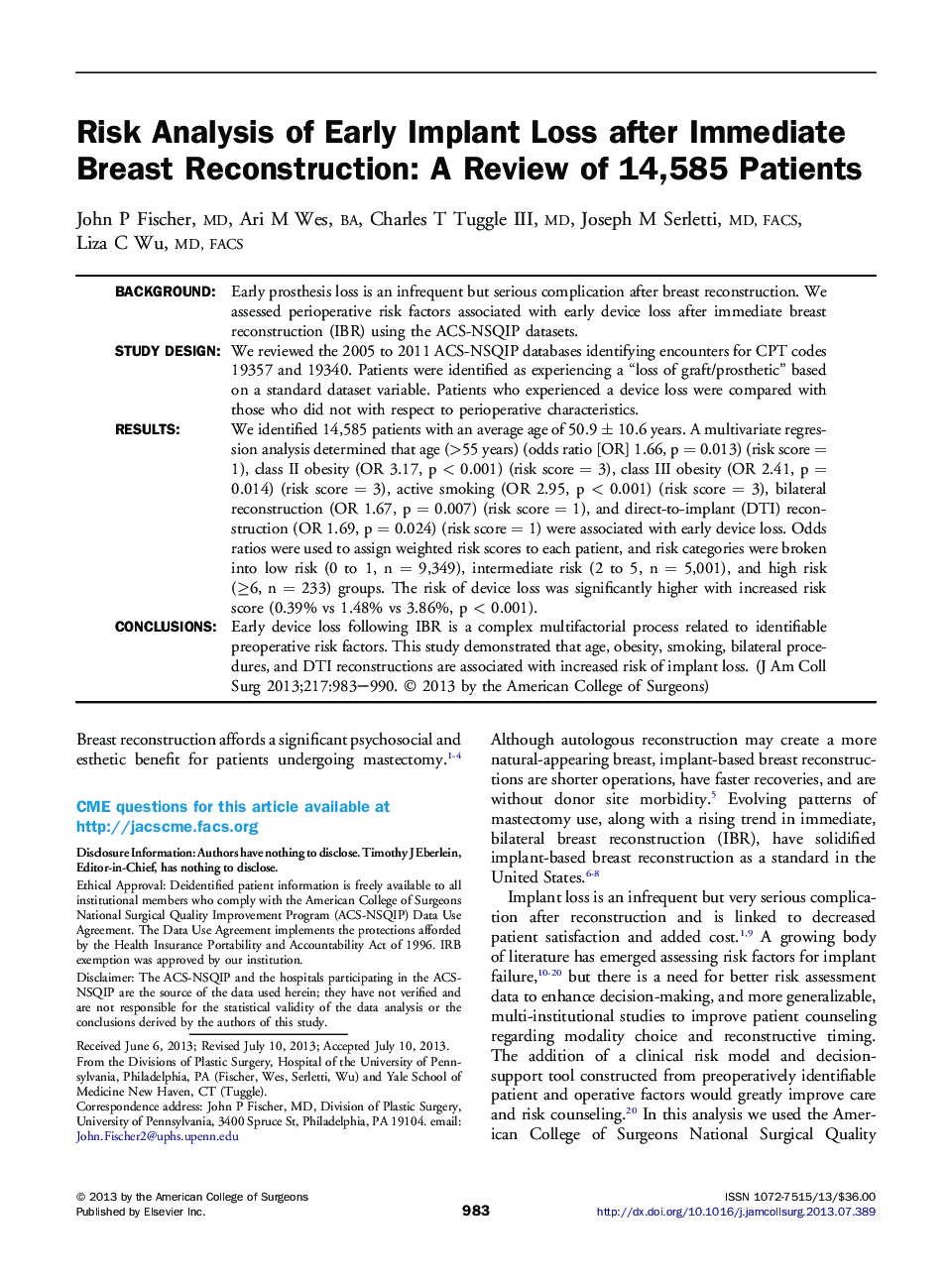| Article ID | Journal | Published Year | Pages | File Type |
|---|---|---|---|---|
| 6252943 | Journal of the American College of Surgeons | 2013 | 8 Pages |
BackgroundEarly prosthesis loss is an infrequent but serious complication after breast reconstruction. We assessed perioperative risk factors associated with early device loss after immediate breast reconstruction (IBR) using the ACS-NSQIP datasets.Study DesignWe reviewed the 2005 to 2011 ACS-NSQIP databases identifying encounters for CPT codes 19357 and 19340. Patients were identified as experiencing a “loss of graft/prosthetic” based on a standard dataset variable. Patients who experienced a device loss were compared with those who did not with respect to perioperative characteristics.ResultsWe identified 14,585 patients with an average age of 50.9 ± 10.6 years. A multivariate regression analysis determined that age (>55 years) (odds ratio [OR] 1.66, p = 0.013) (risk score = 1), class II obesity (OR 3.17, p < 0.001) (risk score = 3), class III obesity (OR 2.41, p = 0.014) (risk score = 3), active smoking (OR 2.95, p < 0.001) (risk score = 3), bilateral reconstruction (OR 1.67, p = 0.007) (risk score = 1), and direct-to-implant (DTI) reconstruction (OR 1.69, p = 0.024) (risk score = 1) were associated with early device loss. Odds ratios were used to assign weighted risk scores to each patient, and risk categories were broken into low risk (0 to 1, n = 9,349), intermediate risk (2 to 5, n = 5,001), and high risk (â¥6, n = 233) groups. The risk of device loss was significantly higher with increased risk score (0.39% vs 1.48% vs 3.86%, p < 0.001).ConclusionsEarly device loss following IBR is a complex multifactorial process related to identifiable preoperative risk factors. This study demonstrated that age, obesity, smoking, bilateral procedures, and DTI reconstructions are associated with increased risk of implant loss.
